Vandana Gombar & Ch Prashanth Reddy in New Delhi/Hyderabad
Early next month, the Madras high court will hear a unique case -- a petition challenging the geographical indications protection given to the famous Tirupati laddu, produced by the Tirumala Tirupati Devasthanam.
The GI recognition, given on September 15 this year, reached the court after a petitioner said that the laddu, which earns a substantial profit for the TTD, does nothing to protect the community rights of stakeholders -- a precondition for getting such protection.
The judgment in this case will have a significant impact on the livelihood of thousands of vendors who earlier used to sell a similar laddu just outside the temple precincts (the GI protection is only for those prepared in the temple kitchen). It will also decide whether the GI status can be granted to a single entity.
While the Tirupati laddu case is unique in terms of its impact and brings into question the entire registration process, India's GI track record in other areas has been mixed.
Tirupati laddus: Caught in a controversy
Image: Pochampalli Ikat saree.A GI registration for a product denotes that it originates from a particular place of production that has a reputation for certain characteristics attributable to that place.
It is different from a trademark, which is used by an enterprise in relation to goods or services so as to distinguish them from others.
The number of products enjoying such protection in the country -- from Darjeeling Tea to Goan Feni to Banaras Brocades and Sarees -- now tots up to a fairly impressive 117. And while there has been a multi-fold increase in the income of the GI-owning community in some cases, there are also a number of instances of zero-impact.
Take the case of Andhra's Pochampalli Ikat, one of the first textile product to get GI protection, in November 2004. The earnings of the cotton weavers increased 54 per cent and that of the silk weavers increased 27 per cent over the two years that GI protection was in force, according to a study by the Textiles Committee, a body comprising government officials and private sector representatives.
This was at a time when incomes of artisans in other clusters were declining.
The income spurts result from the consumer's willingness to pay a premium for a 'genuine' product, as well the diversion of income from the non-genuine producers.
Tirupati laddus: Caught in a controversy
Image: Goan workers make Feni.In a broad survey by United Nations Conference on Trade and Development across some products, consumers were willing to pay a 1 to 10 per cent premium for GI-protected products.
The story for Rajasthan's Kota Doria is similarly positive. "There was a three-fold increase in weavers' income," says Abhijit Das, deputy project coordinator at Unctad, one of the many agencies helping communities secure GIs. This directly impacted at least 200 families.
Securing the GI is, however, only the first step on the ladder to better incomes for the community. An awareness and marketing drive to push buyers towards the genuine GI products is the next big step, as is action against violators.
Marketing and protecting GIs are both fairly effort-intensive activities and since the Rajasthan government was active on both counts, the Kota Doria weavers benefitted.
Similarly, the upside of the Pochampalli Ikat came from increased awareness after an order from Air India, which bought Pochampalli sarees for its air crew, says P Nayak, director, Textiles Committee.
Tirupati laddus: Caught in a controversy
Image: Silver filigree, a speciality of Andhra Pradesh.Andhra Pradesh is, in fact, one of the most proactive states in the field of GI and is the only one to have an IPR facilitation cell housed in the A P Technology Development and Promotion Centre -- a joint initiative of the state government, Confederation of Indian Industry and Technology Information, Forecasting and Assessment Council.
Besides Pochampally Ikat, Andhra has many more products under GI protection -- Kondapally Toys, Silver Filigree, Nimmalakunta Leather Puppetry and the Tirupati laddu, among others.
According to the head of APTDC and its IPR cell K Subodh Kumar, six more products are in pipeline for GI registration, including Gadwal Sarees and Kurnool Rice.
The GI protection and the subsequent awareness and marketing of these products have also ensured product innovation in response to consumer demand. Karimnagar Silver Filigree artisans, for instance, are now receiving orders for new models like the Hi-Tec city instead of the traditional figures like goddess Durga or the peacock.
While these are success stories, there have been many failures as well. The case of Feni shows how some states have rushed to bag GI registrations with little thought on the potential upsides.
Tirupati laddus: Caught in a controversy
Image: Pochampalli saree.In the case of Feni -- the first product to get GI protection in Goa in February -- there could not have been any impact since the product is still not allowed to be taken out of Goa.
The GI-protected Feni is also limited to the one made from cashew when there is a fairly strong case for GI protection for coconut Feni also, argues Dwijen Rangnekar, assistant professor at the University of Warwick who has studied the case of Feni.
He added that there could be doubts over whether the Feni GI will be relevant at all given that the strength of the liquor specified in the GI is lower than what most drinkers prefer.
Rangnekar makes a case for sector experts to be part of the GI registry to ensure that the protection granted is not limiting the market.
Tirupati laddus: Caught in a controversy
Image: Tirupati laddus.Industry experts, however, argue for a wider study of the GI legislation, which came into force in September 2003 and the impact of the GIs on an urgent basis.
"A committee should be set up to study the GI law should see what has been the impact what has been achieved," says T C James, director of the National Intellectual Property Organisation, an NGO committed to creating awareness about IPRs.

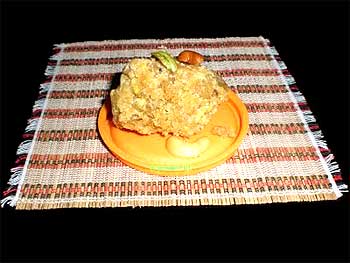

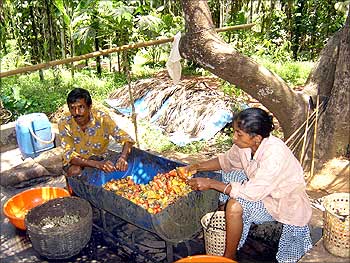
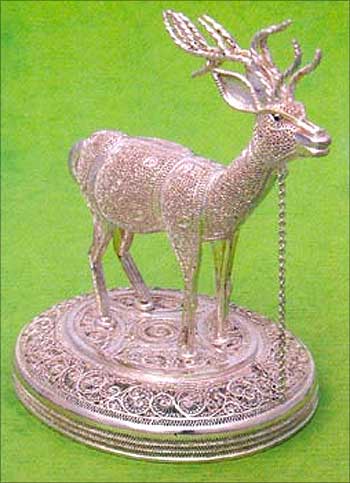
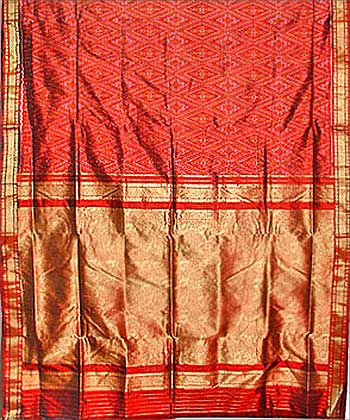
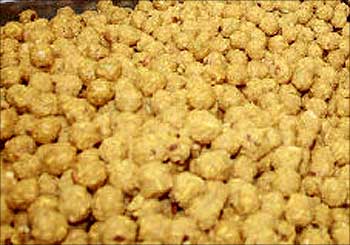

article